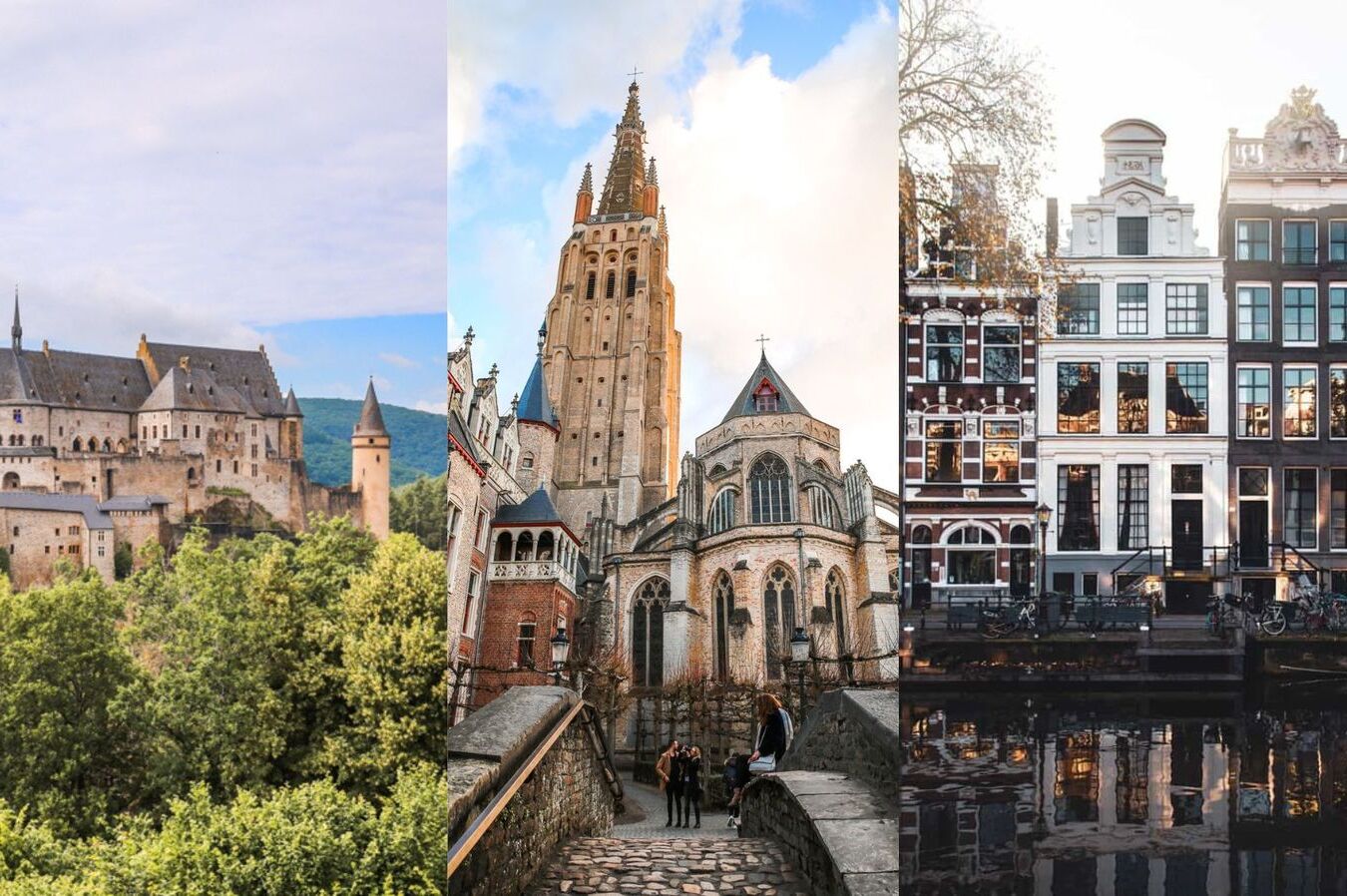
What makes the Benelux region so unique? The Benelux region, comprising Belgium, the Netherlands, and Luxembourg, is a fascinating blend of history, culture, and economic prowess. Nestled in northwestern Europe, these three nations have been pivotal in shaping European integration. From the bustling cities of Brussels and Amsterdam to the serene landscapes of Luxembourg, the Benelux region offers a rich tapestry of experiences. Known for its high population density, linguistic diversity, and historical significance, this area has contributed immensely to art, science, and industry. Whether it's Belgium's comic strip culture, the Netherlands' innovative land reclamation, or Luxembourg's technological hub, the Benelux region stands out as a dynamic and culturally rich part of Europe.
Key Takeaways:
- The Benelux region, made up of Belgium, the Netherlands, and Luxembourg, is a unique and diverse area with rich history, cultural contributions, and a strong focus on economic integration and cooperation.
- With its dense population, beautiful natural scenery, delicious culinary delights, and significant technological and scientific achievements, the Benelux region continues to be a dynamic and culturally rich area of Europe.
Geography and Location
The Benelux region, comprising Belgium, the Netherlands, and Luxembourg, is a fascinating area in northwestern Europe. Let's explore some intriguing facts about its geography and location.
- The Benelux region is bordered by Germany to the east and France to the south. Belgium, the Netherlands, and Luxembourg share a common border.
- Belgium is one of the smallest countries in Europe, covering an area of 30,528 square kilometers.
- The Netherlands is known for its flat landscape, with about 26% of its land below sea level.
- Luxembourg is the only Grand Duchy in the world, meaning it is ruled by a Grand Duke or Duchess.
Population and Urbanization
The Benelux region is densely populated and highly urbanized. Here are some key facts about its population and cities.
- Belgium has a population density of 363.6 people per square kilometer.
- The Netherlands has an even higher population density, with 407.8 people per square kilometer.
- Luxembourg, though smaller, has a population density of 247.2 people per square kilometer.
- Major cities like Brussels, Antwerp, Amsterdam, Rotterdam, and The Hague are economic and cultural hubs.
Language and Culture
The Benelux region is a melting pot of languages and cultures. Let's dive into some interesting cultural facts.
- In Belgium, French and Flemish (Dutch) are the primary languages, with a small German-speaking population in the Liège region.
- The Netherlands primarily speaks Dutch, a language known for its long compound words.
- Luxembourg uses Letzenburgish, a German dialect, alongside French and German.
- Belgium is renowned for its comic strip culture, with over 700 comic strip artists.
Historical Significance
The history of the Benelux region is rich and varied. Here are some historical highlights.
- The Low Countries were conquered by the Romans in the 1st century BCE.
- Belgium declared its independence from the Netherlands in 1830.
- During World War I, the Netherlands remained neutral, while Belgium and Luxembourg were occupied by German forces.
- All three countries were overrun by the Germans in World War II and later became founding members of NATO.
Economic Integration and Cooperation
The Benelux region has been a pioneer in economic integration. Let's look at some key facts about their economic cooperation.
- In 1947, Belgium, the Netherlands, and Luxembourg formed the Benelux Customs Union.
- This union expanded into the Benelux Economic Union in 1960, eliminating customs barriers.
- The Benelux region was one of the founding members of the European Economic Community (EEC) in 1958.
- The Schengen Agreement, which eliminated border controls, was implemented in 1985, with the Benelux region playing a key role.
Unique Contributions and Innovations
The Benelux region has made significant contributions to various fields. Here are some notable innovations and cultural contributions.
- Belgium is a significant player in the diamond industry, with Antwerp being a global hub.
- The longest word in Dutch, "Kindercarnavalsoptochtvoorbereidingswerkzaamhedenplan," has 53 letters.
- Luxembourg stands as the world's second-wealthiest nation in terms of wealth.
- Belgium was the first country in Europe to have a railroad.
Famous Figures and Cultural Icons
The Benelux region has produced many influential figures and cultural icons. Let's explore some of them.
- Karl Marx, the Bronte sisters, and Victor Hugo all lived and wrote at the Grand Place in Brussels.
- Charlemagne, one of the most powerful rulers of his time, was born in Belgium.
- Adolphus Sax, the inventor of the saxophone, was Belgian.
- Both the Smurfs and Tintin were conceived by Belgian artists.
Natural Beauty and Wildlife
Despite its dense population, the Benelux region boasts beautiful natural scenery and diverse wildlife. Here are some facts about its natural beauty.
- The Ardennes plateau in Belgium reaches 2,277 feet (694 meters) at Botrange.
- The Ardennes region is home to wild boars, deer, wildcats, and pheasants.
- Several bird species, including sandpipers and snipes, can be found in the Ardennes.
- Muskrats and hamsters inhabit various parts of Belgium.
Culinary Delights
The Benelux region is famous for its delicious food and drink. Let's savor some culinary facts.
- Belgium has over 650 varieties of beer and 408 breweries.
- Waffles, moules frites (mussels served with French fries), and chocolate are popular Belgian foods.
- The French fries were invented by Belgians, not the French.
- The Netherlands is known for its cheese, with Gouda and Edam being famous varieties.
Technological and Scientific Achievements
The Benelux region has made significant technological and scientific contributions. Here are some notable achievements.
- Simon Stevin, a Belgian mathematician, was the first to use the decimal system in mathematics.
- Peter Piot, a Belgian scientist, discovered Ebola.
- Robert Cailliau, a Belgian, co-invented the World Wide Web.
- Luxembourg is becoming a hub for technology and data, attracting major corporations.
Institutions and Governance
The Benelux region has established various institutions to foster cooperation and governance. Here are some key facts about these institutions.
- The main institutions of the Benelux Union include the Committee of Ministers, the Council of the Union, and the General Secretariat.
- The Benelux Parliament is composed of 49 members from the respective national parliaments.
- The Benelux Court of Justice plays a crucial role in resolving disputes and interpreting laws.
- The Interparliamentary Consultative Council informs and advises governments on all Benelux matters.
Future Prospects
The Benelux region continues to be a dynamic and culturally rich area of Europe. Here are some facts about its future prospects.
- The Benelux region remains a model for international economic integration and cooperation.
- The region's strong economic foundation and rich cultural heritage position it for continued growth.
- The Benelux Union continues to inspire other regions to follow in its footsteps.
- The strategic location of Luxembourg makes it an attractive hub for technological innovation and data processing.
Miscellaneous Facts
Let's wrap up with some miscellaneous facts about the Benelux region that didn't fit into the other categories.
- Belgium holds the record for going the longest without a government, lasting 249 days in 2011.
- The Benelux Office for Intellectual Property handles intellectual property rights within the region.
Benelux: A Region of Rich History and Innovation
Benelux, comprising Belgium, the Netherlands, and Luxembourg, stands out for its rich history, cultural diversity, and economic dynamism. From the bustling cities of Brussels and Amsterdam to the serene landscapes of the Ardennes, this region offers a unique blend of tradition and modernity. The Benelux countries have been pioneers in European integration, contributing significantly to the formation of the European Union and the Schengen Agreement. Known for their comic strip culture, technological advancements, and culinary delights, these nations continue to influence global trends. Whether it's Belgium's world-famous chocolates and beers, the Netherlands' innovative land reclamation projects, or Luxembourg's status as a financial hub, Benelux remains a fascinating area of Europe. This region's commitment to cooperation and progress ensures it will continue to play a vital role in shaping the future of Europe.
Frequently Asked Questions
Was this page helpful?
Our commitment to delivering trustworthy and engaging content is at the heart of what we do. Each fact on our site is contributed by real users like you, bringing a wealth of diverse insights and information. To ensure the highest standards of accuracy and reliability, our dedicated editors meticulously review each submission. This process guarantees that the facts we share are not only fascinating but also credible. Trust in our commitment to quality and authenticity as you explore and learn with us.


